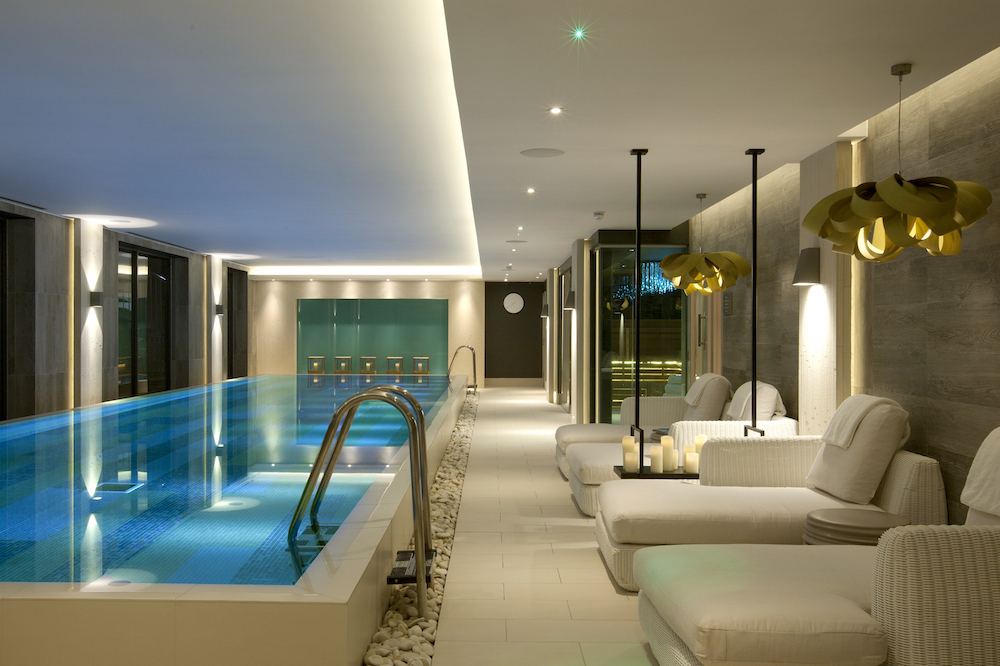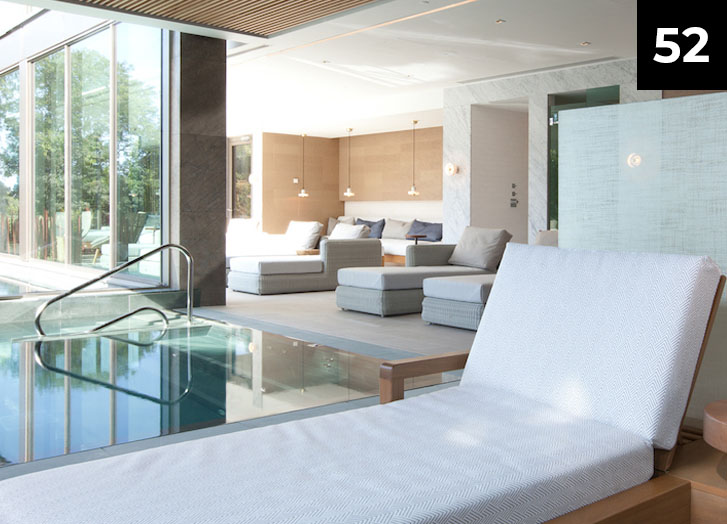GTHD
A GUIDE TO HOTEL DESIGN PT 52:
SPA DESIGN IN THE NEW ERA OF WELLNESS
In the next decade, spa design will seamlessly blend wellness, technology and touch to enhance the guest journey, future-proofing the business for years to come, as Sparcstudio explains…
The future of spa and wellness design remains positive. Out of crisis comes innovation and we have witnessed this in 2020 in the way that many spas have pivoted their business in response to the changing rules and regulations set out of governments around the world. During the year we have considered the impact of the pandemic for spa and wellness design and believe that spas of the future will have to be mindful of personal space for each guest, designing the wellness space to maximise comfort while embracing nature – connecting the inside with the natural world outside.
Sparcstudio has identified a number of design trends for hotel investors and spa operators to be aware of when planning their next project.
Spa in nature
Post-Covid I believe there will be an even greater emphasis on outdoor spa-ing and a link to nature. Guests will want to escape hermetically sealed artificial environments and will embrace the outside. Natural pools and Spa gardens will be even more key such as the ones we helped to create at South Lodge Spa.
A spa garden doesn’t have to include expensive hydro pools and heat cabins. Maximise the use of any outdoor space as part of your spa experience. Be it a garden, courtyard or roof terrace or just a view through an open window. Outdoor sensory experiences could include individual relax zones dotted around an aromatic herb garden, daybeds arranged around a firepit sprinkled with cedar chips, or playful swinging seats alongside a beautiful trickling water feature.
Personalised and Individual spaces
Personalised spaces within large spa communal relaxation spaces will give way to smaller more intimate couples spaces spread throughout the journey. Expect to see pod changing rooms and spaces where guests can enjoy shared treatment experiences for two people or a small private group.

Image credit: Cottonmill Spa at Sopwell House
Free to roam areas such as pools and thermal suites and relaxation spaces will need to rely more on signage and other methods to inform about levels of usage. The new added transparency in thermal suite design is a great benefit in that guests can check via glass enclosures as to how busy a heat cabin is prior to entering. Where rooms are dark or enclosed it is possible to incorporate an electronic screen to the exterior of the room such as the one that was designed for the Meditation room at Sopwell Cottonmill Spa. The small screen communicates via sensors to indicate which of the beds are occupied. This has the added benefit of minimising disturbance of guests already in a room by opening the door to check to see if a bed is available.

Image credit; Dormy House
Health is the new wealth
We think there will be a further blurring of the lines between wellness, spa and fitness offers and that there will be even more demand for these facilities post-Covid as we seek to be healthier in mind and body. We anticipate there being a move away from the concept of a ‘spa’ as a once in while treat, and that there could be an increase in the spa as a Private Members Club similar to the model that can be experienced at the Club at Cottonmill Sopwell House Hotel, where spa becomes as regular a isit as the traditional gym and incorporates yoga spin and fitness facilities.
Led by technology
Intelligent use of technology will be adapted to create safe spaces for guests – self-cleaning rooms, UV robots, anti-viral fogging, ‘Star Trek’ type sensor opening doors, and RFID Touch Technology for opening lockers and to pay for services for example. We don’t think this will translate into clinical sensory deprived environments – but tech should enable and facilitate in a discreet way. For example, Cottonmill Spa at Sopwell House has digital screens to indicate available space within the Relax Room.
The importance of clean air in spas will see the introduction of mechanical ventilation and air conditioning antivirus treatment systems. These will become commonplace as will the opportunity to naturally heat and ventilate spaces. Expect to see an explosion in the utilisation of outdoor space in spas where spa and wellness experiences in the fresh air will prove popular with guests.
Since you’re here, why not read our 5-minutes-with interview with Beverley Bayes, Director of Sparcstudio?
New build properties will rely on naturally antiseptic materials such as copper and include homogenous and large-scale floor and wall finishes which reduce grout and are easier to clean.
With all technological advances and design developments, spa designers must always consider how to integrate the human experience into a guest journey – perhaps drawing on the ‘barefoot luxury’ style we designed at the Spa at South Lodge design, this ideal must always maintain priority, so that it is elegant, beautiful, functional and people friendly.
Sparcstudio is one of the brands that has taken advantage of our Industry Support Package. To keep up to date with supplier news, click here.
Main image caption: Sparcstudio






